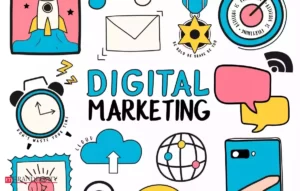7 Amazing Ways To Write A Compelling Blog Post

If you are looking for ways to make your blog posts more engaging, this article is for you! Find tips that will help you create a compelling post. These include taking the time to research content and adding images to your post. These also have including interactive elements like videos or quizzes. Don’t forget to use keywords in your title and throughout the blog post itself. This helps increase SEO ranking. Keep reading below if you want some more great ideas on how to write an effective blog post!
1. Know Your Audience
Writing a blog post is to create something that your audience will enjoy. Keep in mind what sort of information they like and how they prefer to learn. You can also try asking questions or incorporating elements into your posts that will motivate readers. The more you know about your audience, the easier it will be for you to write a compelling blog post.
1. Take some time before you start writing your blog post. Research your topic and make sure you understand everything about it properly. Don’t assume that just because you have some knowledge on the subject, it will be enough to write a post. There is nothing more frustrating that reading an article and finding that you have no idea what the writer means. Because they didn’t explain something fully!
2. Know who your audience is and how they prefer to learn new information. For example, some people like to read blog posts at night before going to bed. Whereas others want quick tips in info graphics or short videos during their lunch break. While still others will watch full tutorials with text included as well as video. Just don’t assume that everyone has the same learning style!
3. Take time out of each day to do research for your next blog post when you are not writing it. So that you can become a subject matter expert for the topic. Make sure that your post will be helpful and useful to your readers.
4. Think about who your audience is when you write your blog posts. This way you can make sure that they are interested in what you are writing about. Your content will be a lot more impactful if they actually care about it!
2. Add Images
As mentioned above, not all of your readers want to read text-based blog posts. So having images can help engage them even more with the information that you are presenting. If possible, try adding some sort of info graphic. This may be an engaging image with bits of information or statistics included. Include a photo or two as well. Since visuals also help draw people in and keep them invested in what write from beginning to end.
1. The more images you add to your blog posts, the better it will be for engaging readers who prefer visuals over text.
2. Be sure that you have permission from the person who took the image if you want to use it in your post. You can get permission directly from them if they are a company. Take some time out of your day to look around for new images that relate to your topic. So that you can include them in the future.
3. If possible, try including info graphics into your posts. Because these help break up information which makes it easier for readers to digest! Don’t forget to include relevant keywords or phrases as well as in the blog post.
4. Are you not good with images or don’t have time to look for some? Try finding a few royalty free images on stock photo sites such as sxc.hu. These are free to use in blog posts so that your audience isn’t distracted by low-quality visuals. Just be sure to give credit where it is due if you do use these photos and make sure they are labeled properly before using them!
3. Make Use of Outbound Links
There is nothing wrong with being inspired by another blog post from another blogger but just make sure that you aren’t copying their content entirely! Put your own spin on it and explain why the other blogger’s writing was effective as well as elements you liked about it and how you plan to implement it in your own writing. Even better, link back to the other blogger and let them know that you are inspired by their work – they might even like this idea!
1. Link out to other blog posts throughout your post so that readers can find more information about what you were talking about without having to Google the topic on their own. Sometimes people may want to see others’ perspectives or learn more about related topics from reading other bloggers’ content instead of yours!
2. You don’t always have to link out just for the sake of linking but only if it is relevant to what you are writing about! Make sure that your audience will actually be interested in finding out more after reading your piece because there is nothing worse than clicking on a link and then being disappointed by what you find.
3. Be sure to provide high-quality content when linking out so that readers are not disappointed after clicking on the link or getting directed from your site to another one. Don’t make them regret clicking!
4. Make sure that you give credit where credit is due by linking directly to the author of the post and including relevant keywords around their name if they write under this name, for example. This way they will likely get notified about your blog post through their profiles which can be good for SEO purposes too!
4. Use Subheaders
If you want to keep people reading your blog posts and engaged with your content, experts suggest breaking up your writing into different sub headers to make it more interesting and easier to digest. You can include a few main topics throughout the post or write about one idea in each sub header – just be sure that users can easily find what they’re looking for when reading through!
1. You don’t have to start every sentence of your paragraph with a new sub header but adding them in between relevant topic sentences is a good way to break up information that would otherwise just keep going and going.
2. Sub headers are helpful for website visitors who scan articles instead of reading every word from top to bottom so sub headers also help improve readability on pages that people visit in this way too.
3. Be sure that your sub headers are answer questions that your readers may be asking when reading through which can draw them in and get them more interested in what you have to say.
4. Don’t go overboard and make sure they aren’t too many of these or irrelevant to the topic itself! 3-5 should be enough to break up information without being distracting.
5. Incorporate Visuals
Not everybody is a fan of long blocks of text which is why adding visuals into blog posts such as photos, illustrations, info graphics, screenshots, videos, etc., are helpful for some people even if it’s just as simple as adding relevant images at the top of each page of content.
1. Adding visuals doesn’t mean that your blog post will be shortened by any means and the only thing that could happen is that people may want to stop scrolling after they see an image or info graphic which can help keep them engaged.
2. Relevant images will drive traffic from your site and social media outside of your own audience because sometimes you might be sharing a post on other sites or get shared by someone else! This helps introduce new people to your writing so be sure that it is worth their time.
3. Make sure the visuals are high-quality as well as relevant and don’t overload on unhelpful content like memes or stock photos – these may even hurt SEO rankings if used too much!
4. You don’t always need visuals in blog posts but having them here and there can be a great way to engage new audience members and keep your current readers interested.
6. Organize Your Writing by Sections
Organizing blog posts with sections is another great way to make sure that users can easily find what they’re looking for when reading through so if you have many different points, it might be best to organize them into main topics or sections.
1. Separate each section out with a sub header just like in the tip above (if this one didn’t convince you already)!
2. You don’t need more than 3-5 sections because people don’t want to feel overwhelmed by endless blocks of information which won’t actually get them anywhere or may seem interesting at first but then turn sour after being read in full detail.
3. Make sure the subsections are well-organized and not just a jumbled mess of sentences that don’t make sense together!
4. You can organize your blog posts in any way you want which is why this tip is helpful – if people like to read from top to bottom then a traditional paragraph structure could work best for you but others might prefer their information organized in other ways so this gives them the chance to find a good balance that works out for everybody.
7. Remember Titles & Headers Too
As stated before, visuals aren’t the only important thing when it comes to visual content because headers and titles also help attract new audience members with search engine rankings as long as’re relevant! You don’t want to mislead website visitors with incorrect titles or headers so keep this in mind while writing & revising.
1. Make sure that the titles and headers are relevant to what is inside of each blog post! Sometimes you might write something surprising but it still needs to be within a reasonable title that makes sense for everybody involved.
2. Be concise with your titles because nobody wants to read through endless words just to find out the point. 3-4 words tops should do the trick here.
3. Keep your headings balanced since sometimes they can become too large or too tiny which doesn’t look good on any site but especially when it comes to blogs – everything should flow nicely as if somebody is reading an actual book! Visuals help with that too.
4. Make sure blog post titles are interesting and catch the eye of readers who might be scrolling through their feeds or searching for what you have to offer but also don’t use clickbait when it’s not appropriate & misleading!







